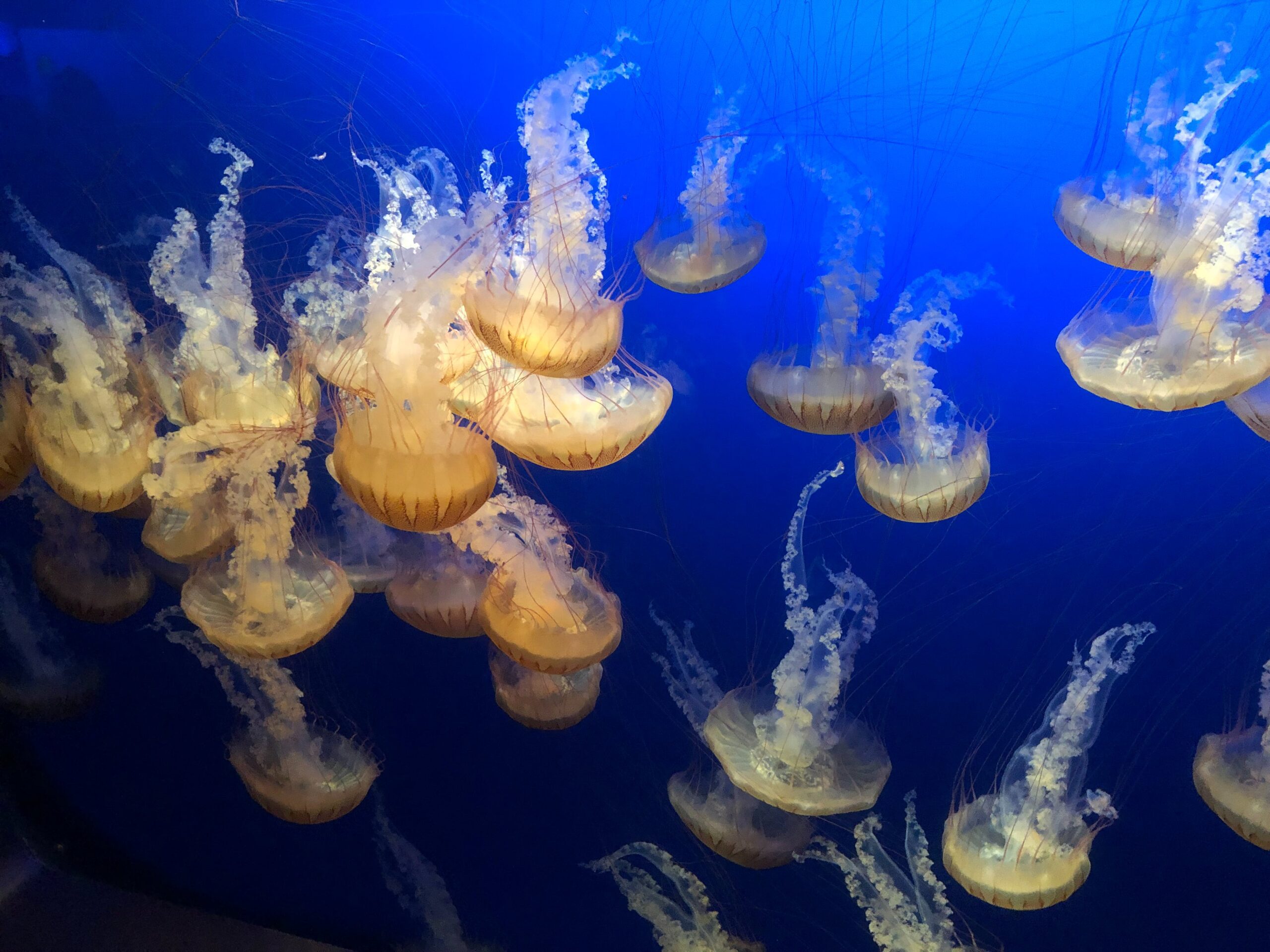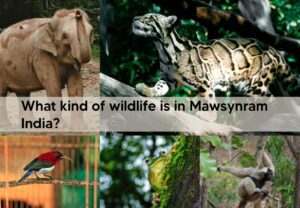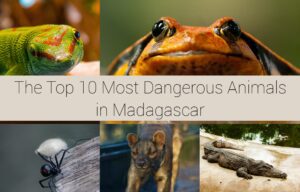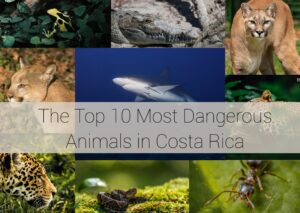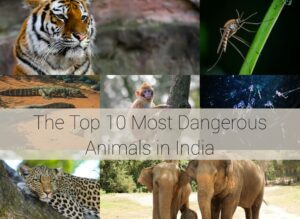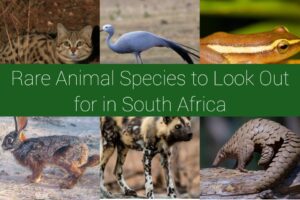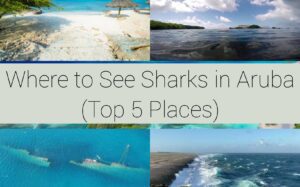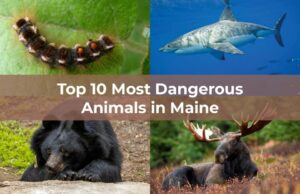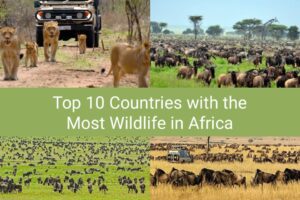Puerto Rico is a small Caribbean that is known for its rich culture, wildlife, and beach views. The island borders the Dominican Republic to the east, the Virgin Islands to the west, and the Atlantic Ocean to the North.
This region is known to have mountain peaks, coastal areas, and tropical rainforests. This makes it possible for many animal species to thrive in the region.
Puerto Rico is home to over 200 bird species and other animals that can be dangerous to travelers and locals alike.
In this article, we will take a look at the top 13 dangerous animals in Puerto Rico. I will also provide steps to take when you encounter these animals in Puerto Rico.
Dangerous Animals in Puerto Rico
1. Fer-de-Lance Snake
Scientific name: Bothrops asper
Habitat: Found in forest areas, along stream edges and ditches, and in some cases are of human habitation.
Diet: Carnivores
The Fer-de-Lance Snake is mostly found in the dense forest areas of Puerto Rico. It is one of the most dangerous snakes in Central and South America.
You are most likely to encounter them in moist environments, then areas with strong seasonal dry periods because of their nature.
The most common symptoms of Fer-de-Lance snake venom are mild fever, numbness, pain, headache, and bleeding from the nose and gums, among others.
If you encounter a Fer-de-Lance snake in the wild, it is important to maintain a safe distance and avoid provoking it. If bitten, seek immediate medical attention and do not attempt to handle or capture the animal.
2. Puerto Rican Racer
Scientific name: Alsophis portoricensis
Habitat: Found in the main island of Puerto Rico from coastal plain to forest areas.
Diet: Carnivores
The Puerto Rican Racer is not the most venomous snake in Puerto Rico, but it can sure be fatal. This snake is commonly found in the mainlands like Toro Negro State Forest and El Yunque National Forest.
Since the Puerto Rican Racer is more active during the day, it is easy for humans to come in contact with them. Due to its aggressive nature, it will not hesitate to strike when it feels threatened.
A bite from this snake can cause symptoms like pain, swelling, and soreness, amongst other things.
If you encounter a Puerto Rican Racer, allow it to retreat peacefully into its habitat. Do not try to go close or corner the snake to prevent defensive reactions.
3. Puerto Rican Tarantula
Genus: Phormictopus
Habitat: Found in burrows near forest trails.
Puerto Rican Tarantula is a venomous terrestrial arachnid that is found in burrows and on land during the dry season. They are nocturnal, meaning they come out at night, so you rarely see them during the day.
This animal is no more than 3 to 5 inches in length and is covered with short, shiny hairs called setae. Their look is quite intimidating.
The venom from the Puerto Rican Tarantula is not very harmful to humans, but it can cause irritation and swelling which needs medical attention.
If you stumble upon a Puerto Rican Tarantula in the wild, the best thing to do is be cautious and not disturb its habitat.
4. Puerto Rican Boa
Scientific Name: Epicrates inornatus
Habitat: Found in hill areas, forest areas, trees, urban and rural areas, and caves.
Diet: Carnivorous
Puerto Rican Boa is known as the largest snake species in Puerto Rico. This is due to its length which is about 2 m (6.6 ft).
Although these snakes are not venomous, they use their bodies to wrap around prey. The Puerto Rican Boa can be admired from a safe distance.
5. Scorpions
Scientific Name: Centruroides spp.
Habit: Found dark areas under rocks, crevices, and caves.
Scorpions can be found in Puerto Rican regions like Vieques, Culebra, Caja de Muertos, Magueyes, Desecheo, and Mona.
Although they are relatively small in size, they are equipped with venomous stingers that can cause intense pain and discomfort. They are mostly found in dark, secluded areas such as crevices and rock formations.
To minimize the risk of encounters with scorpions, stay cautious when exploring rocky terrain or handling debris. Shake out clothing and footwear before wearing them to prevent accidental stings.
6. Puerto Rican Giant Centipede
Scientific Name: Scolopendra alternans
Habitat: Found in tropical forests and subtropical forests.
Diet: Carnivores
Puerto Rican Giant Centipede is a centipede species that is known for its large size and venom. They can be found in dark, moist places such as in leaf litter or under rocks in Puerto Rico.
This centipede has a venom which can also be harmful to humans. Some of the common symptoms experienced from centipede sting are excessive pain, redness, nausea, and fevers.
If you encounter a Puerto Rican Giant Centipede do not attempt to pick it up or touch it. Retreat calmly and allow the creature to resume its activities undisturbed.
7. Yellow Fever Mosquitoes
Scientific Name: Aedes aegypti
Habitat: Found in forests, marshes, and tall grasses.
When visiting tropical areas like Puerto Rico, you should be fully prepared to handle mosquitoes. These mosquitoes can make you sick and this can affect your travel.
One of the best ways to get rid of mosquitoes is to use repellents and stay in places that experience little to no mosquitoes.
8. Box Jellyfish
Scientific name: Chironex fleckeri
Habitat: Found in tropical and subtropical oceans.
Box jellyfish are known for their extremely painful stings which can be fatal. Since they are transparent, it is hard to spot them in time to avoid their sting.
The best way to avoid being stung is not to touch them and be alert when in the water. If you are stung seek medical help immediately.
9. Caimans
Scientific Name: Caiman crocodilus
Habitat: Found in freshwater, rivers, mangroves, swamps, and marshes.
Diet: Carnivores
Caimans belong to the Alligatoridae family and are often mistaken to be alligators. Puerto Rico has a good population of caimans especially in the northern areas of the island.
Just like alligators and crocodiles, caimans have been known to attack humans when they are challenged in their habitat.
Due to their razor-sharp teeth, caimans can hurt humans when provoked. If you come across this animal while in Puerto Rico, you need to keep your distance and observe from afar.

10. Great White Shark
Scientific Name: Carcharodon carcharias
Habitat: Found in coastal waters, and deeper oceanic waters.
Diet: Carnivores
Great White Sharks can be found in regions with colder waters. They are often referred to as the most dangerous shark species since the can easily attack humans.
These sharks are massive and can measure up to 5.83 m which is 19.1 ft in length. It is always a good idea to be on the lookout for these creatures when exploring deep waters in Puerto Rico.
11. Brown Recluse Spider
Genus: Loxosceles
Habitat: Found in woodpiles, sheds, garages, and dry places.
The brown recluse spider is one of the most venomous spiders in Puerto Rico. A bite from this spider can cause severe pain and discomfort.
If you happen to come across this spider while in Puerto Rico, do not disturb their habitat. In a situation where you are bitten by a brown recluse spider, you need to seek medical attention immediately.
12. Red Lionfish
Scientific Name: Pterois volitans
Habitat: Found in the Ocean
A sting from the red lionfish can cause pain and possibly headaches, but it is not fatal to humans. This aquatic animal is known for its spiky fins that contain venom.
They are mostly found in the waters in Puerto Rico and since they are territorial, they can react by stinging when you get too close to them.
13. Puerto Rican Screech Owl
Scientific Name: Megascops nudipes
Habitat: Since it is a nocturnal bird, it is found in dense woodland or caves.
Diet: Carnivorous
While the Puerto Rican Screech Owl is not inherently dangerous to humans, it can exhibit defensive behavior when provoked. Its sharp talons and powerful beak serve as formidable defenses against potential threats.
If encountered, observe the Puerto Rican Screech Owl from a safe distance and avoid disturbing its habitat. This animal is quite helpful in controlling pest populations and maintaining ecological balance.
Final Thoughts
Puerto Rico is known for its rich wildlife and fun locations which makes it a good travel destination to relax. In this article we have looked at some of the dangerous animals in Puerto Rico and what to do when you encounter them.
It is important to note that each animal plays a vital role in maintaining ecological balance and most of the time does not attack unless provoked.
FAQs (Frequently Asked Questions)
Are all the animals listed in the article aggressive towards humans?
While some animals listed, like the Fer-de-Lance snake and the Puerto Rican Giant Centipede, can be aggressive when provoked, many others are not inherently dangerous to humans but should still be admired from a safe distance.
Does Puerto Rico have lions?
No, Puerto Rico does not have lions. The region is known for smaller mammals like mongooses, bats and shrews.
Are there specific areas in Puerto Rico where these dangerous animals are more commonly found?
Yes, certain habitats such as dense forests, rocky terrain, and secluded areas are more likely to harbor dangerous animals like snakes, scorpions, and tarantulas.

Hi, I’m Louis Ojibe, and I grew up around wildlife in Africa. I have always been fascinated by animals and nature across the world.
As a child, my parents used to take me to see wild animals like lions, elephants, gorillas, tortoises, and many others at our local zoo.

